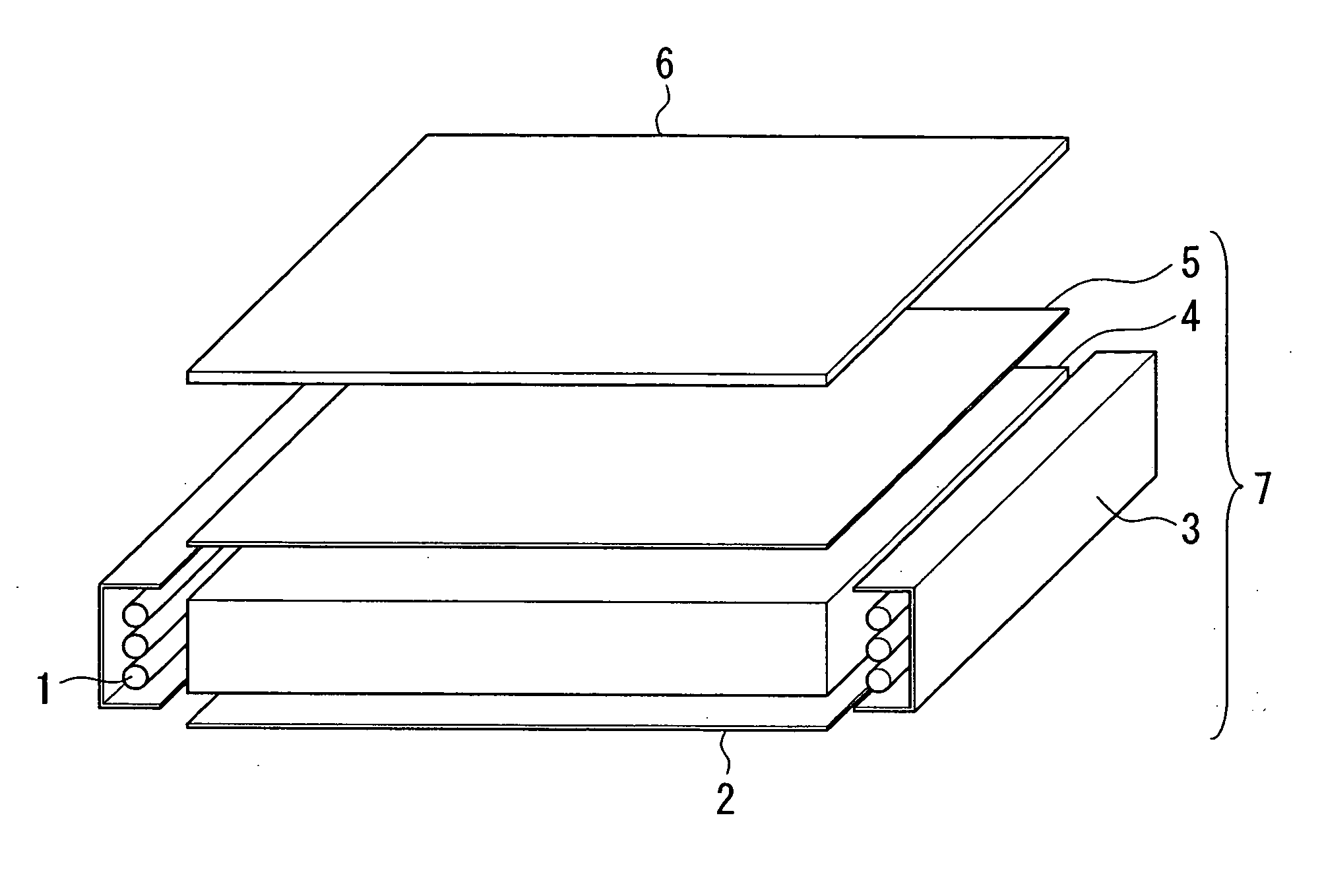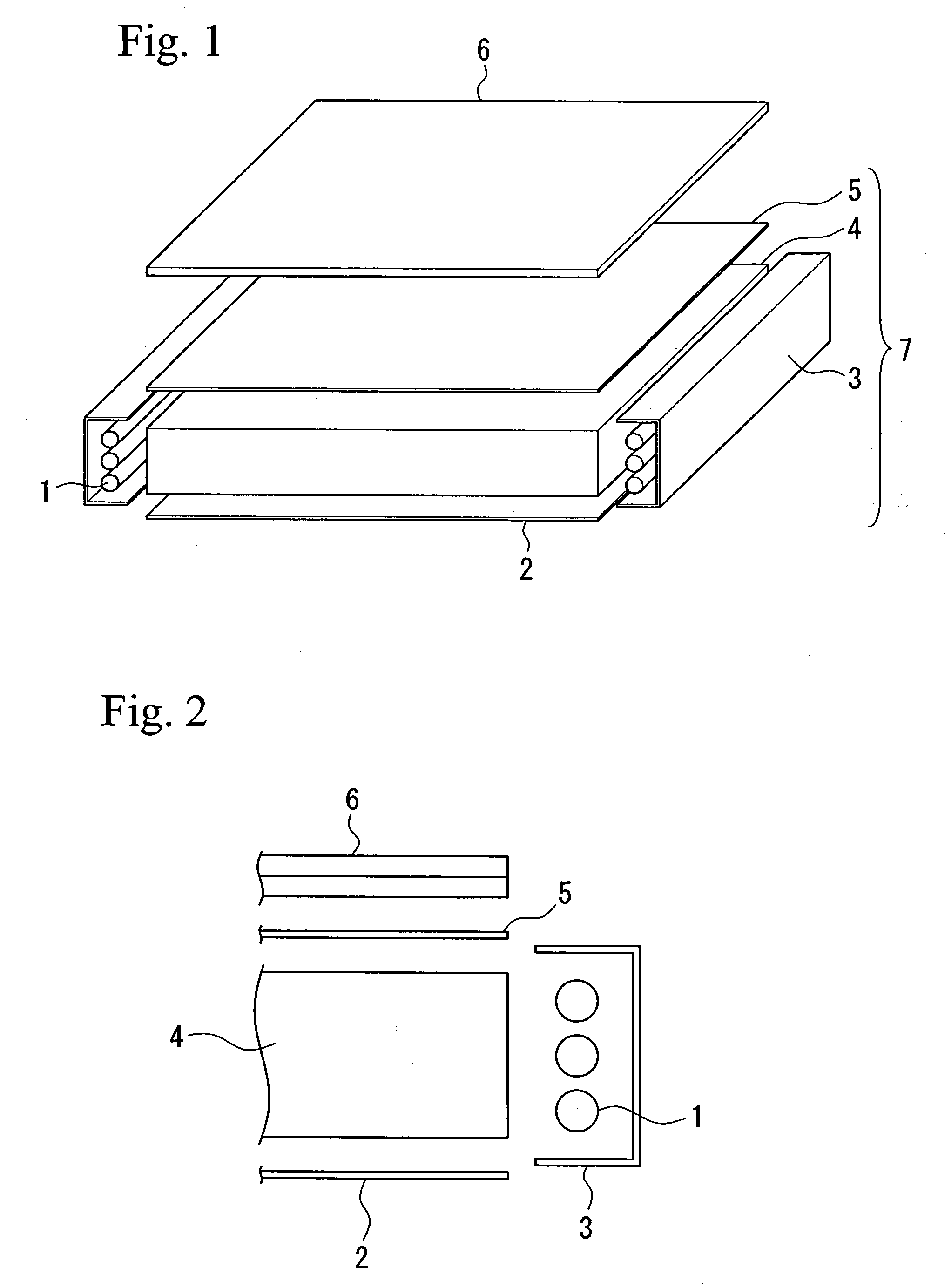Image display apparatus
- Summary
- Abstract
- Description
- Claims
- Application Information
AI Technical Summary
Benefits of technology
Problems solved by technology
Method used
Image
Examples
first embodiment
[0048] The first embodiment of the present invention is described with reference of FIG. 1 to FIG. 3. FIG. 1 is a structural view showing principal portions of an image display apparatus that uses a liquid crystal display panel as a display device, as an example of the image display apparatus according to the present invention. FIG. 2 is a view showing an example of the layout of a cold cathode fluorescent lamp serving as a light source. FIG. 3 is a view showing an example of the emission spectrum of a fluorescent lamp.
[0049] As is shown in FIG. 1, this image display apparatus has a liquid crystal display panel 6 and a backlight unit 7, where the liquid crystal panel 6 being placed on the front surface of the backlight unit 7. The backlight unit 7 comprises a fluorescent lamp 1, a reflective plate 2, a reflector 3, an optical guide plate 4, and an optical sheet 5. As is shown in FIG. 2, three fluorescent lamps 1 are placed in parallel with the edge of the optical guide plate inside...
second embodiment
[0056] As is shown in FIG. 5, when fluorescent lamps 1 having three different luminescent colors are used, a uniform color and brightness is obtained in the center portion of the liquid crystal display panel 6, however, in the vicinity of the ends of the optical guide plate 4 near to the fluorescent lamps 1, the distribution of light that is emitted from the three fluorescent lamps and radiated to the liquid crystal display panel 6 from the backlight unit 7 is different from at center portion, that is, in the vicinity of the ends of the optical guide plate 4, the radiation of the light from the fluorescent lamp 1 that is positioned on the nearest side of the reflective plate 2 is abruptly attenuated. Accordingly, in case the luminescent colors of the three fluorescent lamps 1 are different, at end portions of the liquid crystal display panel 6 near the fluorescent lamps 1, coloring unevenness will occur because the color of the light radiated to the liquid crystal display panel 6 ch...
third embodiment
[0058] The human eye has the ability to identify the differences of approximately 0.002 in chromaticity coordinates x and y. In order to reduce coloring unevenness at the display surface, it is effective to make the colors of the three fluorescent lamps 1 close to each other. FIG. 9 and FIG. 10 show the examples using a reddish fluorescent lamp in which phosphor having red and green emission spectrums are mixed with a ratio of (red 5: green 5), a greenish fluorescent lamp in which phosphor having green and blue emission spectrums are mixed with a ratio of (green 8: blue 2), and a bluish fluorescent lamp in which phosphor having red and green and blue emission spectrums are mixed with a ratio of (red 68: green 17: blue 15). The lighting colors of the respective fluorescent lamp are all similar colors, and the color reproduction range is narrow, as is shown in FIG. 9 and FIG. 10. However, it is possible to realize the white colors of P45 and P104 by lighting intensity ratio adjustment...
PUM
 Login to View More
Login to View More Abstract
Description
Claims
Application Information
 Login to View More
Login to View More - R&D
- Intellectual Property
- Life Sciences
- Materials
- Tech Scout
- Unparalleled Data Quality
- Higher Quality Content
- 60% Fewer Hallucinations
Browse by: Latest US Patents, China's latest patents, Technical Efficacy Thesaurus, Application Domain, Technology Topic, Popular Technical Reports.
© 2025 PatSnap. All rights reserved.Legal|Privacy policy|Modern Slavery Act Transparency Statement|Sitemap|About US| Contact US: help@patsnap.com



